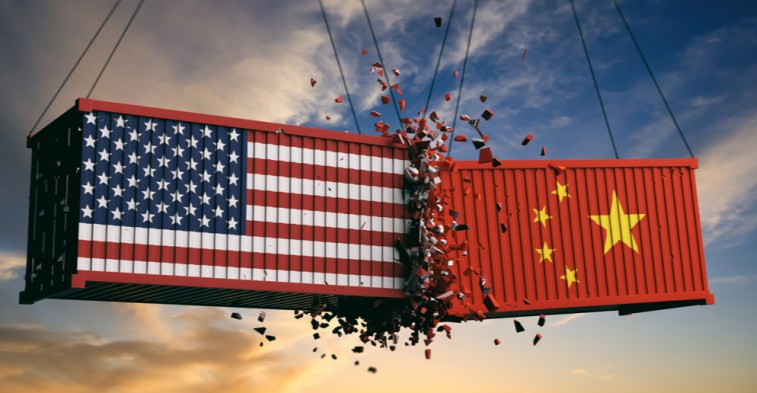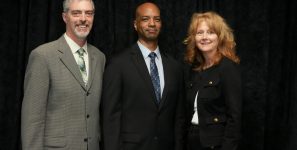U.S.-China Trade War of 2019 Spills into 2020 for Ports, Shippers and Manufacturers
The Jan. 15 signing of a U.S.-China Phase One agreement did spawn a sigh of relief among those troubled by the trade tensions between the two nations. But six days later, a warning came from a couple experts closely watching the unfolding events on behalf of ports, shipping lines and manufacturers. The crux of that warning? Stay tuned.
“This is a truce,” said Phil Levy, chief economist at Flexport, a San Francisco-based freight forwarding and custom brokerage company. “This is not the end of the trade war.”
Levy shared that opinion as he joined his company’s CEO Ryan Peterson in leading a webinar on Jan. 21 that was listened in on electronically by some of their 10,000 clients in more than 200 countries. Those who rely on the company’s expertise in ocean, air, truck and rail freight, drayage & cartage, warehousing, customs brokerage, financing and insurance–all informed and powered by Flexport’s unique software platform—heard Levy say of the U.S.-China trade war: “We haven’t seen a retaliatory escalation of this magnitude in the post-World War II era. … This really was a 2019 story that worsened throughout the year.”
He pointed to a graphic that showed trade between the world’s two biggest economies fell markedly last year, and that no one overseeing trans-Pacific supply chains were immune from economic harm. Many webinar participants could relate as 64 percent of Flexport’s customers rely on the trans-Pacific trade routes, according to Peterson.
Yes, the Phase One deal was a positive first step, but Levy pointed to some examples of lasting victims from the trade war. It exposed the continued “decay,” as the economist put it, of the World Trade Organization (WTO), which is supposed to prevent the escalation of trade disputes. The “keeper of peace” amid trade tensions was largely frozen out of U.S.-China talks and, therefore, silent as events transpired.
A second heavy blow came in December 2019, when the WTO’s appellate body ceased to function, according to Levy, who noted that the formation of the “WTO system was one of core achievements since World War II.”
Peterson found equally worrisome the first-ever disappearance of peak season when it comes to shipping. As many known, imports grow during the fall and really heat up by November’s holiday shopping season. That not happening in 2019, couple with a steady decline is U.S. imports from China after years of solid growth, is a reason for concern, according to the CEO, who maintained, “global trade is down due to tariffs.”
For one thing, not having a peak season to rely on, coupled with steadily declining trade, “from our perspective makes life very hard to plan for,” Peterson said.
He did see on the horizon what many may view as a green lining: lower freight fees and consumer prices. “Lower prices do sound good,” Peterson conceded, “until someone goes bankrupt. We want stability, predictability. Things getting too cheap is unpredictable. You are playing with fire.”
Feel the burn? Peterson called our current “degree of uncertainty relatively unprecedented. We learn about things in a tweet. Was that really implemented or not?” As an example, he cited France proposing a digital tax and President Donald Trump striking back with threats of tariffs on cheese and wine. “Is that policy or not?” Peterson asked rhetorically. “Right now it’s a tweet. It makes it very hard to plan for.”
Levy warned “there is no safe play.” You can withstand the brunt of the tariffs and see what that does to your bottom line, or you can figure out a way to work around them and then have a trade deal come along with no way to return to normal operations quickly enough.
As Peterson pointed out, it’s not just the sting of the tariffs but the amount of paperwork and other adjustments one must handle while trying to remain agile. That time takes away from other things you need to be doing with your business.
Speaking of time away, Levy believes there will be no further movement in deescalating trade tensions between the U.S. and China until after America’s November presidential election. He suspects that China agreed to the Phase One conditions, which were much more weighted against that country than the U.S., “to buy a year of peace.” He added that China could be playing it coy in the weeks ahead as Beijing awaits the outcome that determines whether they will continue to deal with Trump or a new White House occupant. “If Trump loses, it’s likely the trade agreement will change anyway,” Levy said.
In the meantime … uncertainty. Peterson noted that one Flexport client had to close a manufacturing plant due to the tariffs. Levy held onto the hope that an eventual U.S.-China trade deal will be beneficial economically, pointing to markets that opened up with the U.S.-Mexico-Canada Agreement replacing the North American Free Trade Agreement. But you never know, as evidenced by USMCA having also resulted in some restricted trade, particularly in the automobile sector. “That was disappointing,” he admitted.
Don’t be surprised if the pain ultimately spreads, as Levy predicted what will happen after the U.S.-China trade war comes to a head. “There are a lot of signs the president will turn his trade policy focus away from China and toward Europe,” said Levy, who later noted Trump has also begun accusing Vietnam of cheating when it comes to trade.
So what to do about all this?
“My stance is there is nothing more important than agility, the ability to adapt,” Peterson said of dealing with tariffs, real or threatened. “It can mean restructuring a supply chain or seeking exemptions.” Companies that foster a culture with an ability to adapt can look at these challenges, Peterson says, and respond: “Bring it on, bring on the change.”





Leave a Reply